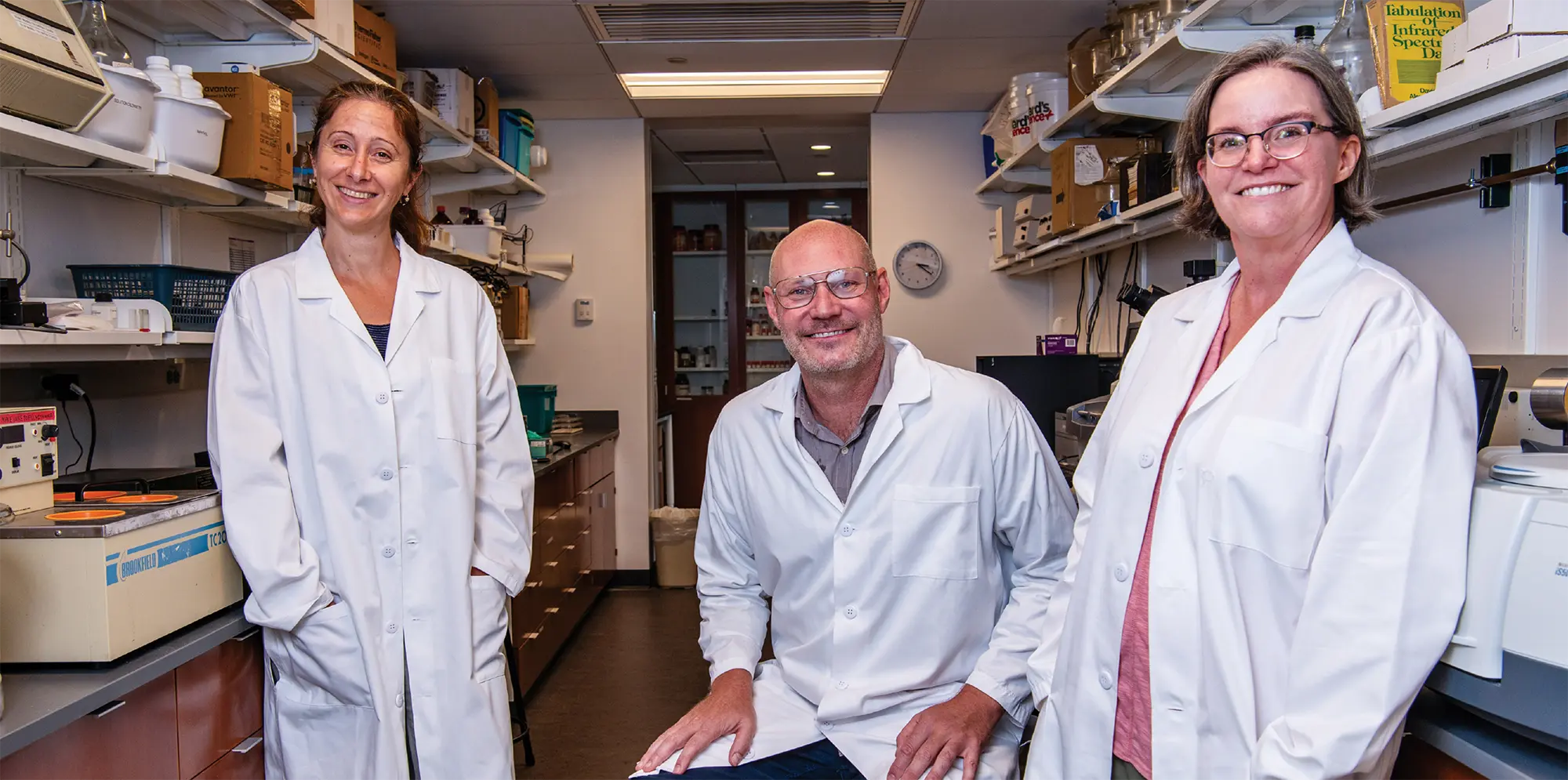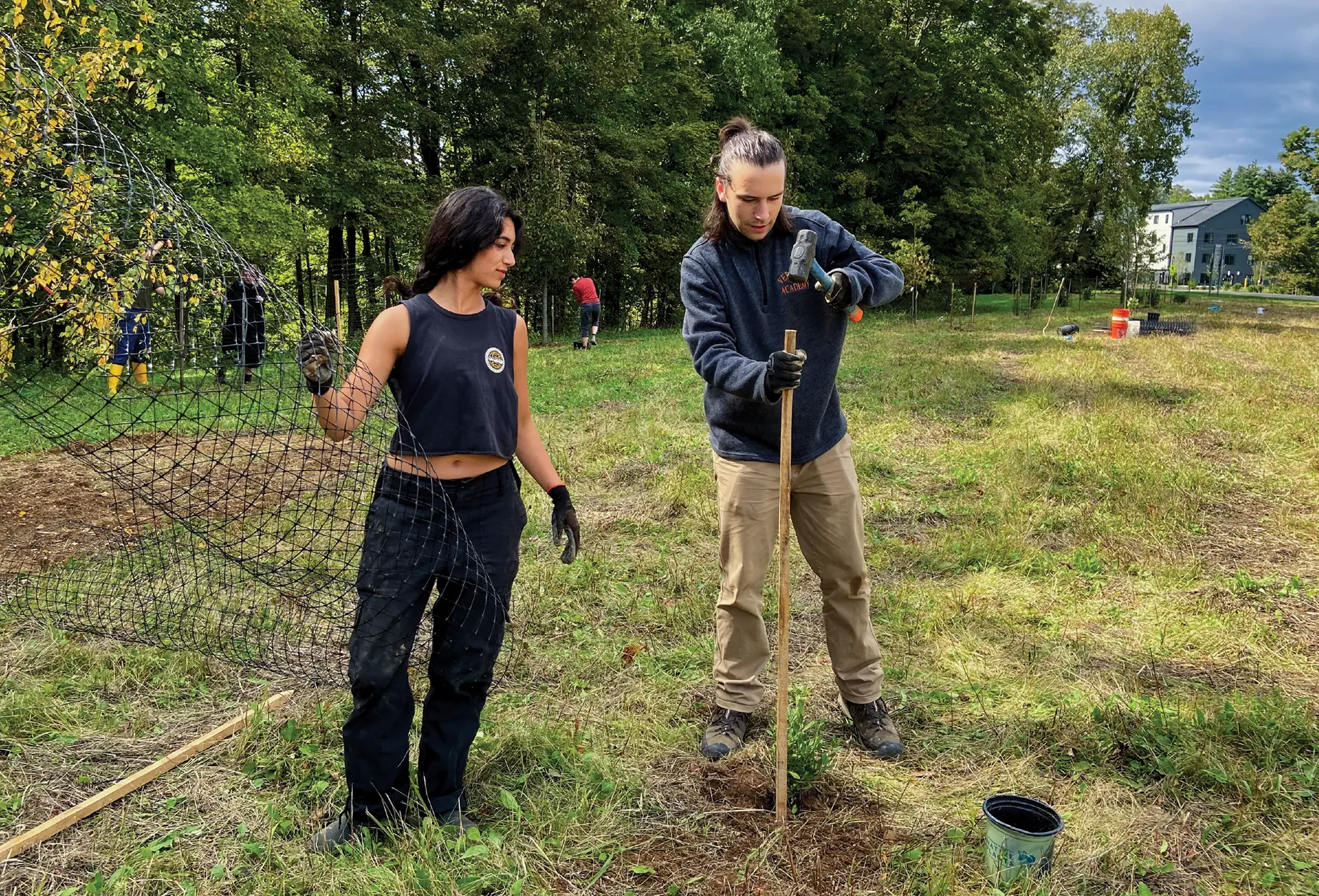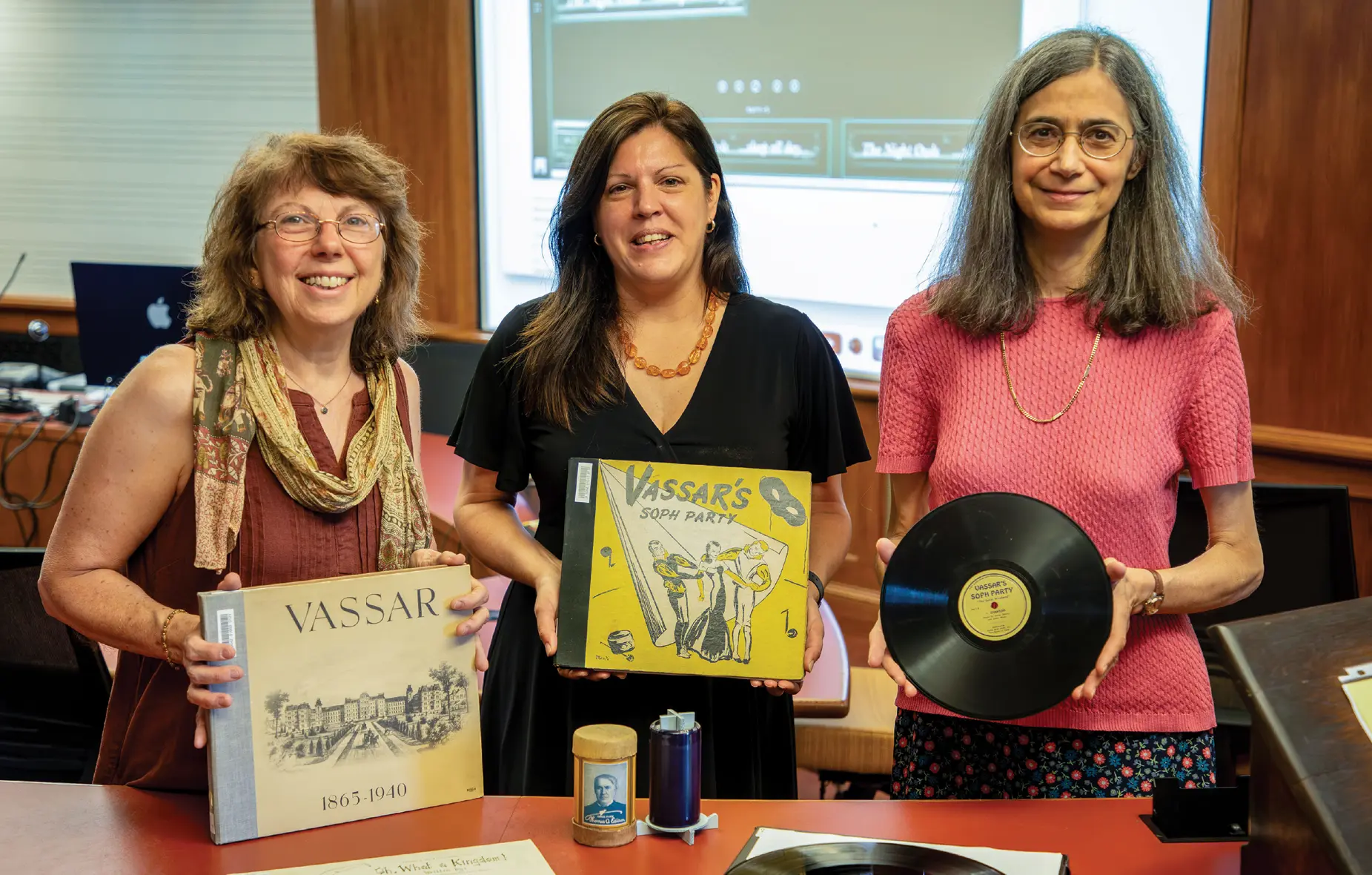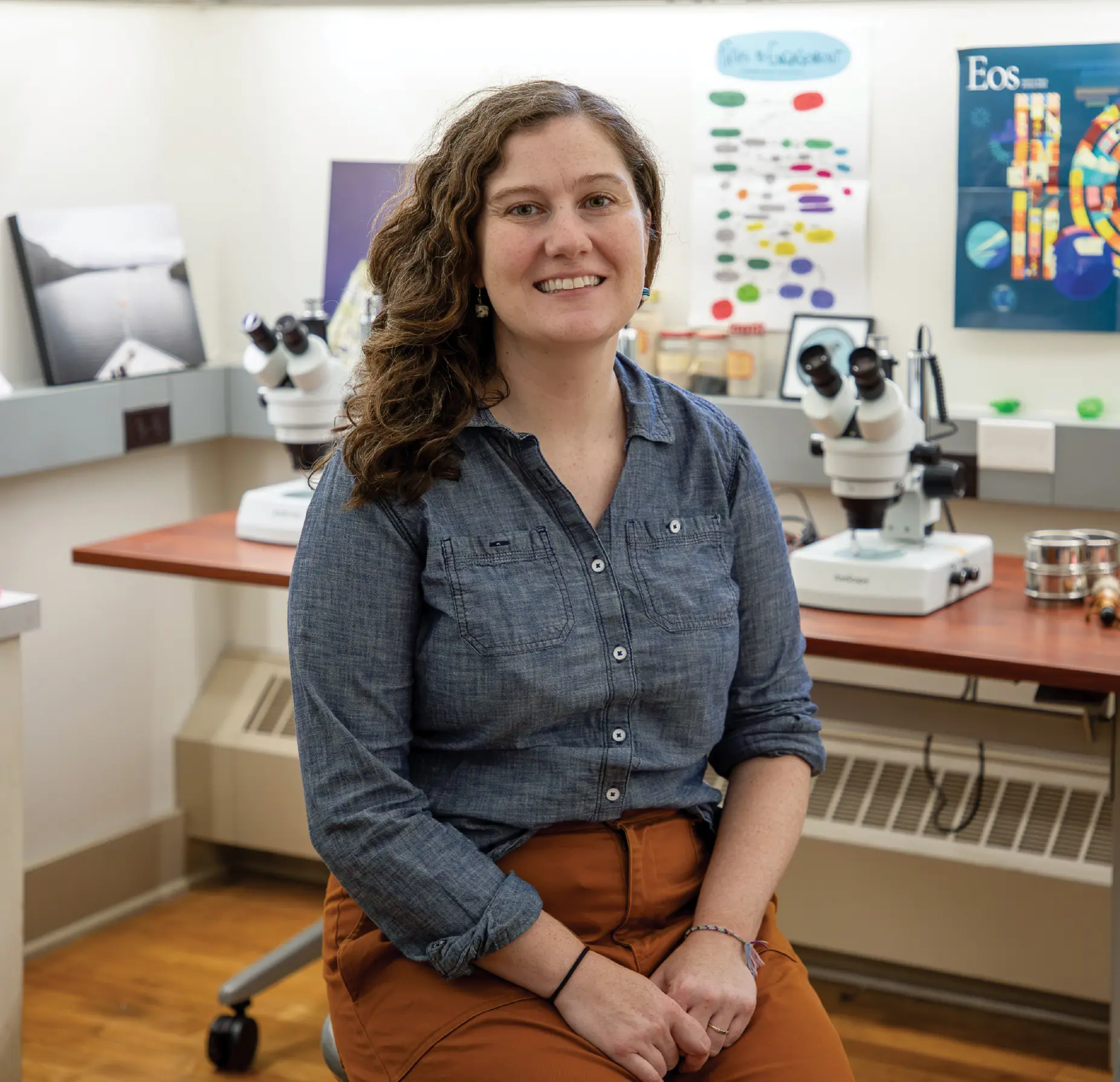
Kelly Marsh
Grants in Action!
The Leica Stellaris 8 is a next-generation confocal microscope that will transform faculty and student research opportunities at Vassar and other Mid-Hudson regional colleges. It is scheduled for delivery in December and is expected to be fully operational for research projects across multiple disciplines by spring, said Bergstrom, who lead a multiyear proposal submission process.
“Twelve faculty members in five departments contributed to writing the grant proposal,” Professor Bergstrom said. “That demonstrates just how much this microscope will be used. It’s a real workhorse that we will use in our day-to-day teaching as well as in our research.”
Professor Zupan said she was looking forward to using the new microscope in student-led projects in her lab. “Imaging with the old microscope is so time-consuming—it takes 90 minutes to perform a procedure that will take eight minutes on the new one,” Professor Zupan said. “With its capacity to complete more projects more quickly, the new microscope will enable more students to be trained on confocal microscopy techniques, which will hopefully make them more excited about participating in research. This acquisition is a real game-changer for a lot of us.”
Associate Professor of Biology Jennifer Kennell, who co-wrote the grant proposal with Bergstrom and Associate Professor of Psychological Science Bojana Zupan, said the grant calls for Vassar to share the use of the microscope with other college faculty and students in the region. This collaboration is consistent with ongoing Vassar faculty collaborations with science faculty at other institutions in the Hudson Valley.
Members of the science faculty at two local colleges said they were also looking forward to using the microscope for their research. “This [microscope] will be a real community resource,” said Megan Dennis, Associate Professor of Biology at Marist College.
Lydia Bright, Professor of Biology at SUNY New Paltz, said she was eager to use Vassar’s new acquisition for her own research. “I look at live cells and need to see how proteins move around, and this microscope is ideal for my work,” Bright said. She said she planned to bring some of her students to Vassar as well. “It will be good for them to see some cutting-edge technology that they may encounter in grad school or later in their careers,” she said. “It will be good for them to be able to say that they have used this kind of technology.”
The Preserve at Vassar Gets New Trees

Vassar’s Historic Musical Performances Get New Life in Digital Recordings
A $40,000 grant from the Mellon Foundation through the Council on Library and Information Resources “Recordings at Risk” program enabled the College to digitize nearly 300 performances recorded on phonograph records, tapes, and compact discs between 1934 and 2016. They are available for listening at Vassar’s Digital Library by members of the Vassar community; educators and researchers may request access by emailing library_systems@vassar.edu. The recordings include formal concerts, Vassar class “parties” (original musical plays), a cappella group performances, school songs, and collaborations between Vassar faculty, students, and choral groups from other colleges and universities.
“Recordings at Risk” is a limited-term (2017-2025) national regranting program to support preservation of rare and unique audio, audiovisual, and other media through digital reformatting. The digitization was done by firms in Philadelphia, PA, and Andover, MA.

Buck Lewis
Vassar Professor Awarded Climate Research Grant

Haynes, along with Jennifer Fehrenbacher, Associate Professor of Earth, Ocean, and Atmospheric Sciences at Oregon State University, and Emily Osborne, a Research Scientist at NOAA, will collaborate on a study. It will assess how proposals to use the ocean to combat the rise in carbon-dioxide levels in the atmosphere will affect marine organisms. Some are proposing to dump alkaline minerals into the ocean to help it absorb and store more carbon dioxide, but the impacts of these actions on marine life remain largely unknown. Haynes, Fehrenbacher, and Osborne will investigate how adding these minerals to the ocean would affect foraminifera—small, shell-building plankton that are important to the ocean’s carbon cycle.
Haynes, who has been studying foraminifera throughout her academic career, said the grant would fund research she will be doing at the Bermuda Institute of Ocean Sciences in summer 2025 and 2026. She will recruit four Vassar students each year to assist her in her research. The grant is part of a $24.3 million project funded by the National Oceanographic Partnership Program, a consortium of public and private organizations including NOAA, the National Science Foundation, the federal Department of Energy, the Office of Naval Research, and the ClimateWorks Foundation.
Lumina Grant to Shine Light on College Success

Bradley will be joined by Wendy Maragh Taylor, Associate Dean of the College for Student Growth and Engagement, and Professor of Education Christopher Bjork as lead investigators on the project. Charlotte Gullick, Exploring Transfer Together Program Manager, and Biniam Tesfamariam, Vassar’s Director of Institutional Research, are the other members of the team. They plan to visit six institutions having greater than expected results over the next 12 months, meeting with faculty, students, and administrators to gather relevant data.
The Lumina Foundation is an independent, private foundation in Indianapolis committed to making opportunities for learning beyond high school available to all. Lumina envisions higher learning that is easy to navigate, addresses racial injustice, and meets the nation’s talent needs through a broad range of credentials. The foundation aims to work toward a system that prepares people for informed citizenship and success in a global economy.